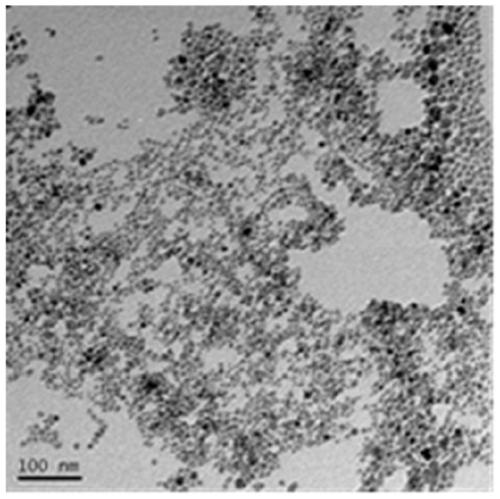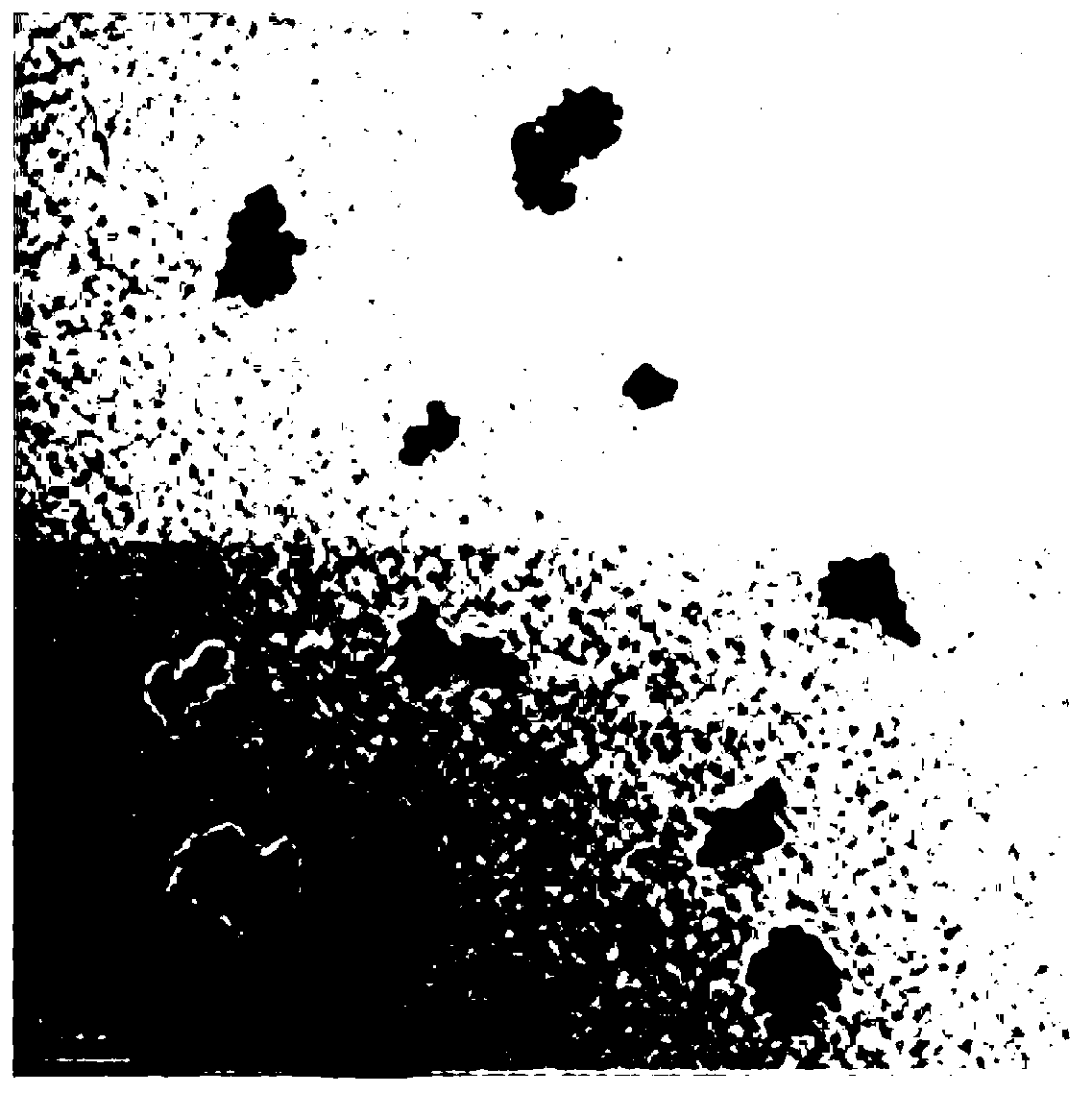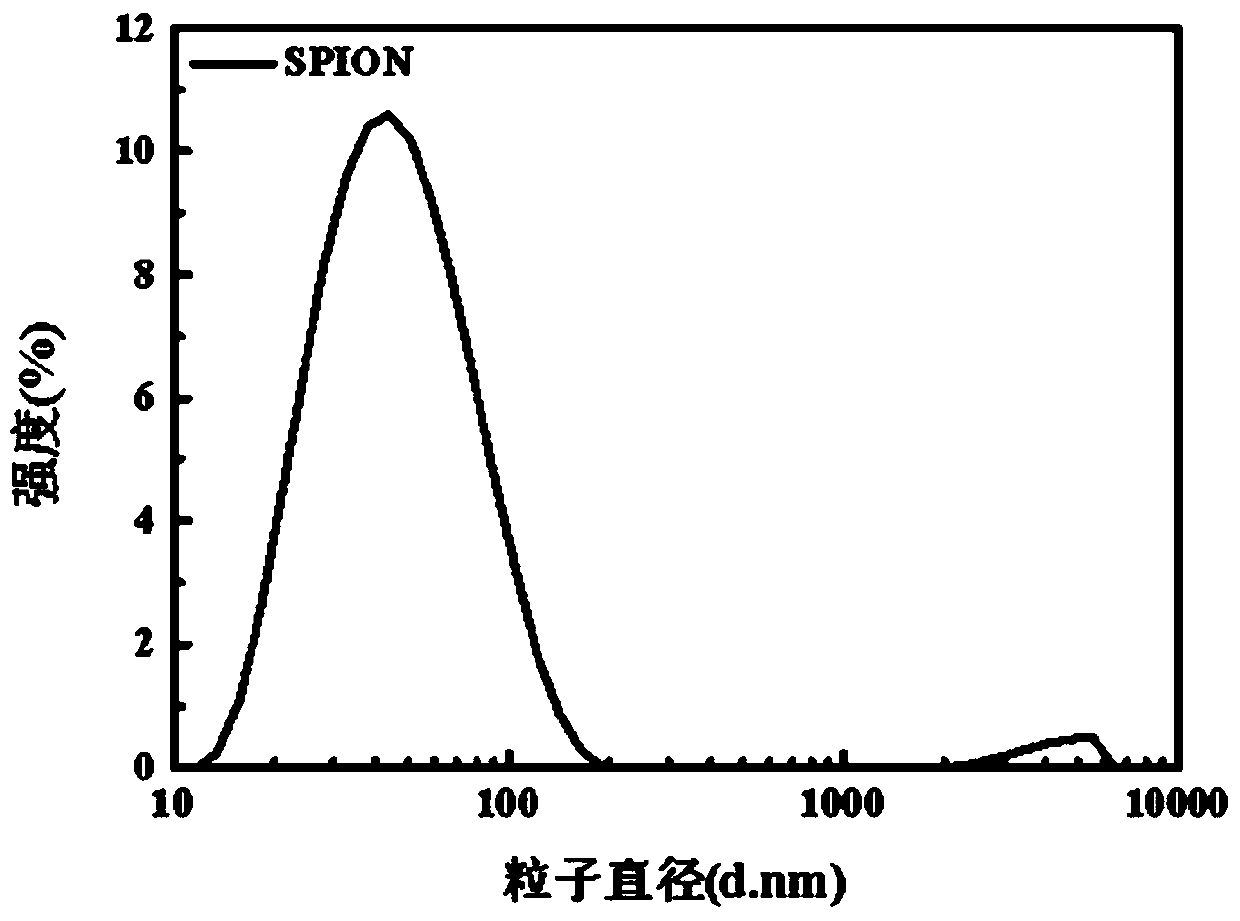Magnetic composite nano material and preparation method and application thereof
A technology of magnetic composite nano and magnetic nanoparticles, which is applied in the fields of nanomaterials and biomedicine, and can solve problems affecting the uptake of nanoparticles by cells
- Summary
- Abstract
- Description
- Claims
- Application Information
AI Technical Summary
Problems solved by technology
Method used
Image
Examples
Embodiment 1
[0117] A preparation method of a pH-responsive magnetic composite nanoparticle diagnosis and treatment reagent comprises:
[0118] Step 1: Dissolve 8g of methoxy PEG (mPEG) and 1.8g of p-formylbenzoic acid (FBA) in 160mL of dichloromethane, add 20mL of dimethylformamide (DMF), and then add 2.48g of dicyclohexyl Carbodiimide (DCC) and 732mg 4-dimethylaminopyridine (DMAP), stirred for 24h.
[0119] Step 2: The system obtained in step 1 was subjected to vacuum filtration for 3 times to remove the precipitate, and the obtained clarified system was purged with nitrogen to remove the solvent, then dispersed in 50 mL of deionized water, and freeze-dried to obtain mPEG-FBA (a polymer with an aldehyde phenyl group at the end). )powder.
[0120] Step 3: Synthesis of superparamagnetic ferric oxide nanoparticles (SPION): get 0.81g ferric chloride hexahydrate (FeCl 3 ·6H 2 O), 0.556g ferrous sulfate heptahydrate (FeSO 4 ·7H 2 O), dissolved in 15mL of deionized water, after the reactio...
Embodiment 2
[0130] Step 1: Dissolve 8g of methoxy PEG (mPEG) and 1.8g of p-formylbenzoic acid (FBA) in 160mL of dichloromethane, add 20mL of dimethylformamide (DMF), and then add 2.48g of dicyclohexyl Carbodiimide (DCC) and 732mg 4-dimethylaminopyridine (DMAP), stirred for 24h.
[0131] Step 2: The system obtained in step 1 was vacuum filtered three times to remove the precipitate, and the obtained clarified system was purged with nitrogen to remove the solvent, then dispersed in 50 mL of deionized water, and freeze-dried to obtain mPEG-FBA powder.
[0132] Step 3: Synthesis of superparamagnetic ferric oxide nanoparticles (SPION): get 0.81g ferric chloride hexahydrate (FeCl 3 ·6H 2 O), 0.556g ferrous sulfate heptahydrate (FeSO 4 ·7H 2 O), dissolved in 15mL of deionized water, after the reaction system was fed with nitrogen for 50min, the temperature was raised to 75°C, and 3mL of ammonia water (the mass concentration was 35% NH 3 ·H 2 0), mixing and stirring 30min, obtains the mixed ...
Embodiment 3
[0142] Step 1: Dissolve 8g of methoxy PEG (mPEG) and 1.8g of p-formylbenzoic acid (FBA) in 160mL of dichloromethane, add 20mL of dimethylformamide (DMF), and then add 2.48g of dicyclohexyl Carbodiimide (DCC) and 732mg 4-dimethylaminopyridine (DMAP), stirred for 24h.
[0143] Step 2: The system obtained in step 1 was vacuum filtered three times to remove the precipitate, and the obtained clarified system was purged with nitrogen to remove the solvent, then dispersed in 50 mL of deionized water, and freeze-dried to obtain mPEG-FBA powder.
[0144] Step 3: Synthesis of superparamagnetic ferric oxide nanoparticles (SPION): get 0.81g ferric chloride hexahydrate (FeCl 3 ·6H 2 O), 0.556g ferrous sulfate heptahydrate (FeSO 4 ·7H 2O), dissolved in 15mL of deionized water, after the reaction system was fed with nitrogen for 50min, the temperature was raised to 75°C, and 3mL of ammonia water (the mass concentration was 35% NH 3 ·H 2 0), mixing and stirring 30min, obtains the mixed l...
PUM
| Property | Measurement | Unit |
|---|---|---|
| particle diameter | aaaaa | aaaaa |
| particle diameter | aaaaa | aaaaa |
| particle diameter | aaaaa | aaaaa |
Abstract
Description
Claims
Application Information
 Login to View More
Login to View More - R&D
- Intellectual Property
- Life Sciences
- Materials
- Tech Scout
- Unparalleled Data Quality
- Higher Quality Content
- 60% Fewer Hallucinations
Browse by: Latest US Patents, China's latest patents, Technical Efficacy Thesaurus, Application Domain, Technology Topic, Popular Technical Reports.
© 2025 PatSnap. All rights reserved.Legal|Privacy policy|Modern Slavery Act Transparency Statement|Sitemap|About US| Contact US: help@patsnap.com



